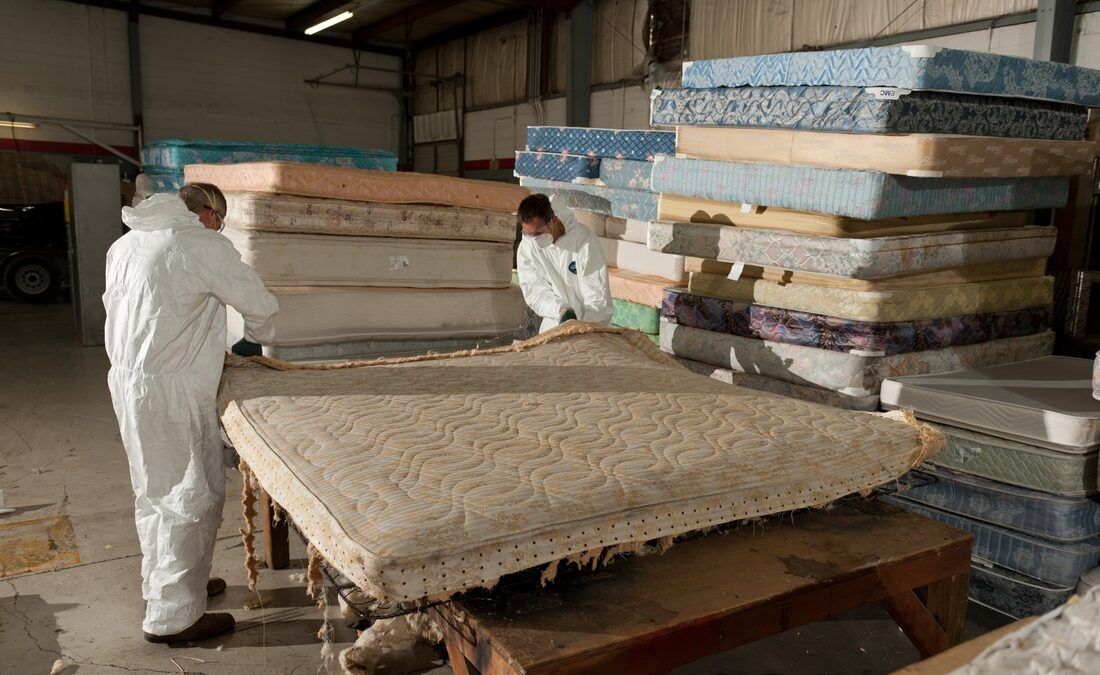As environmental awareness continues to grow, sustainable mattress disposal is becoming increasingly important. With millions of mattresses ending up in landfills each year, new trends are emerging to address this issue. Here are the latest trends in sustainable mattress disposal, with insights from Mind Your Mattress eco-friendly mattress disposal.
1. Increased Focus on Recycling
Recycling has become a major trend in mattress disposal. More companies and municipalities are establishing mattress recycling programs, ensuring that materials like metal springs, foam, and fabric are repurposed instead of ending up in landfills. This trend is helping to reduce the environmental impact of discarded mattresses significantly.
2. Extended Producer Responsibility (EPR)
Extended Producer Responsibility (EPR) is a policy trend where manufacturers are held accountable for the entire lifecycle of their products, including disposal. In the mattress industry, this means that companies are increasingly responsible for recycling or disposing of their products in an eco-friendly manner. This trend is pushing manufacturers to design more sustainable mattresses and take back old ones.
3. Donation Programs
Many organizations are now focusing on donation programs as a sustainable way to dispose of mattresses. Mattresses that are still in good condition can be donated to shelters, charities, or families in need. This not only reduces waste but also provides essential support to communities.
4. Upcycling Initiatives
Upcycling is another growing trend in sustainable mattress disposal. Creative individuals and businesses are finding new ways to repurpose mattress materials into useful products. For example, mattress springs can be turned into art or home décor, and foam can be used for pet beds or insulation.
5. Composting Organic Mattresses
As the demand for organic mattresses grows, so does the trend of composting them at the end of their lifecycle. Mattresses made from natural, biodegradable materials like latex, wool, and cotton can be composted, returning nutrients to the soil and reducing waste.
6. Zero-Waste Initiatives
Zero-waste initiatives are gaining traction in the mattress industry. These initiatives focus on ensuring that no part of the mattress goes to waste. Companies involved in zero-waste mattress disposal aim to recycle, repurpose, or compost every component, minimizing the environmental impact.
7. Government Regulations and Support
Governments are increasingly recognizing the environmental impact of mattress disposal and are enacting regulations to promote sustainable practices. This includes supporting recycling programs, enforcing EPR policies, and offering incentives for sustainable disposal methods.
8. Consumer Awareness and Action
Consumers are becoming more aware of the environmental impact of their purchasing decisions, including how they dispose of old mattresses. This trend is driving demand for sustainable disposal options and encouraging companies to offer eco-friendly solutions.
9. Innovative Recycling Technologies
Advancements in recycling technology are making it easier to break down and repurpose mattress materials. New methods are being developed to separate and process different components of mattresses more efficiently, making recycling more cost-effective and widespread.
10. Partnerships Between Manufacturers and Recyclers
Partnerships between mattress manufacturers and recycling companies are becoming more common. These collaborations help ensure that mattresses are designed with recyclability in mind and that they are disposed of in the most sustainable way possible.
Conclusion
Sustainable mattress disposal is evolving rapidly, with new trends and technologies emerging to reduce the environmental impact of discarded mattresses. By staying informed about these trends and supporting eco-friendly initiatives, you can make a positive contribution to the environment. For more information on sustainable mattress disposal methods.
Related posts
Categories
Recent Posts
Advertisement


